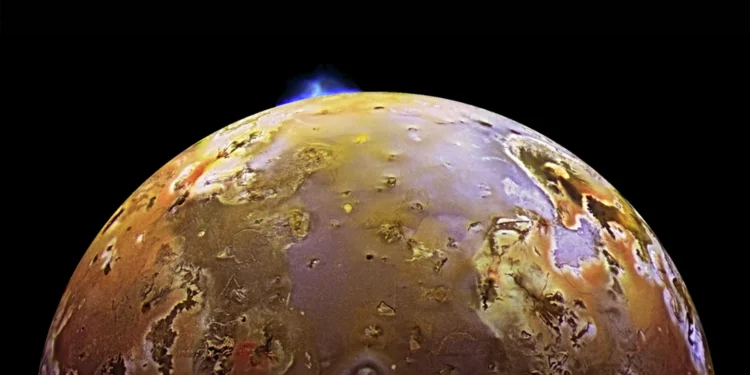Jovian Moon:-Io is the most active Volcanic body in the Solar System and it is the innermost of Jupiter’s four major moons. This is the consequence of the tidal forces that Jupiter and two of its other sizable satellites, Europa and Ganymede, inflict on the moon.
A volcanic outburst on Jupiter’s moon Io has been recorded by scientists from the Institute of Planetary Sciences. This is supported by studies done utilizing the Arizona-based Io Input/Output (IOIO) tool.
On Io, Jupiter’s innermost moon, the greatest volcanic outburst ever seen was seen in late 2022. Jeff Morgenthaler of the Planetary Science Institute used the PSI’s Io Input/Output observatory to find the eruption (IOIO).

Due To Volcanic Eruptions, NASA Extended Spacecraft For Five Years: Jovian Moon
The Juno mission is heading to Io for a close landing site in December 2023 after completing a Europa flyby. It will be significantly impacts by the eruption. It is possible to learn more about the eruption’s chemical makeup by using the equipment on board Juno. Which is sensitive enough to detect changes in the plasma environment surrounding Io. Astronomers can observe weak vapors near the gas giant due to the IOIO’s use of a coronagraphic technique to partially block out Jupiter’s strong light.
The spacecraft Juno was launched in 2011. Juno reached Jupiter five years later. After then, the spacecraft spent a further five years investigating Jupiter. The largest planet in our solar system by seeing through its thick clouds and analyzing its atmosphere and climate. The mission created to help astronomers in their understanding of the formation and evolution of Jupiter as well as the origins of other gas giants in the solar system.
NASA extended the Juno mission’s current September 2025 deadline last year. Jupiter and its several moons are still being investigated by the probe.
Io is considerably different from the ice-covered moons Ganymede and Europa, which are both thought to have oceans of liquid water beneath their frozen surfaces that may contain simple forms of life, according to experts.



